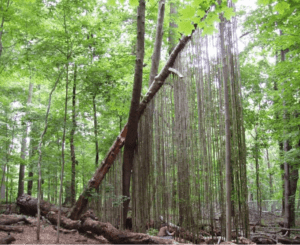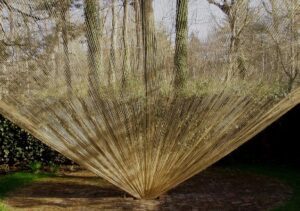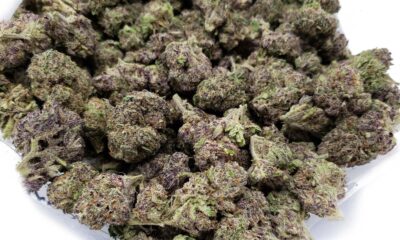ENTERTAINMENT
Elevating Nature: Sylvia Benitez’s Artistic Exploration of Flora
Amidst the swift pace and constant activity characterizing contemporary existence, many of us forget to take the time to understand what life really means to us and how this relates to our inner peace. Few individuals like Sylvia Benitez emphasize the importance of living differently. These few strive to bring attention to this phenomenon, using their gifted capacities– recognizing their art and talent behind hidden puzzles–to leave a long-lasting impression on their surroundings. Their zealous personalities hold massive power, crafting masterpieces and building connections within our contemporary society, gifting a significant community with awe. And perhaps, the peace we all seek.
While it may sound like a fantasy for those who have never experienced the imaginative outcomes of an artist’s mind, even they would agree with the power of art and the attention it captivates as one explores the relentless efforts crafted by the soft bristles of a paintbrush against a canvas or the intricacies suffered by delicate hands in creating sculpture an artist has sweated for days to create.
American visual artist Sylvia Benitez was born on June 27, 1957 and is well-known for her atmospheric paintings and sculpture installations. Her inventive application of native flora and materials, as well as her investigation of Arte Povera concepts, define her sculptural work. But it was as the creator of The Gentileschi Aegis Gallery Association (GAGA), that she attained notoriety. She established this nonprofit in 2011 and currently still serves as its president. The nonprofit helps create exhibition opportunities for member artists.
The Moment of Recognition for Benitez
AICA recognized Sylvia Benitez in 1997 for her outdoor sculpture installation in Puerto Rico; she also received two Pollock-Krasner Foundation awards in 1997 and 2000; an Adolph and Esther Gottlieb Individual Support Grant in 2011; and two National Endowment for the Arts Visiting Artist Fellowships, written and filed through the auspices of these hosting organizations: the Abington Art Center in Pennsylvania, 2008 and the Escuela des Arte Plasticas, San Juan, Puerto Rico, 2001. Other artist fellowship residencies include The Ucross Foundation, 1993, Manhattan Graphics Center, 1991, Yaddo, 1984, Altos De Chavon, Dominican Republic, 1984, MacDowell Colony, 1984 & 1985; Virginia Center for the Creative Arts, 1999; Sculpture Space, 1998; The Vermont Studio Center, 2003; etc.
The Commencement of Benitez’s Artistic Career
Behind every great success story lies an epic tale of struggles and the valuable days of learning. Similarly, Benitez before gaining wide recognition for her prowess initiated her artistic career in the early 1980s. While she was still a resident of New York City’s Lower East Side, she adopted and implemented the ideas of Arte Povera. Gradually, her artistic focus shifted to using native flora, such as wild grape vine, kudzu, maple tree seeds, bamboo, bejuco vine, phragmites and farmer’s baling twine. Materials she could easily find or harvest near site. This use of readily available organic material used in a sculptural way paved the way for Benitez being one of the ten artists chosen to exhibit at the John’s Hopkins University Sculpture Biennial exhibition in 2004 held on the Evergreen House’s lawns.
Numerous esteemed locations, such as Socrates Park, Wave Hill, the Whitney Museum, El Museo de Historia, Anthropologia y Arte, American Craft Museum, and Stone Hill Quarry Art Park, have hosted her work. For these, Benitez employed mostly harvested grapevine and/or other harvested matter to create the sculpture. Her focus on baling twine as a signature material originated when it was first used as an armature for her work exhibited in Art Omi’s exhibition, “Aedicules”.

Hatshepsut: Abington Art Center, Harvested Bamboo and Fallen Maple Tree, 2008
It was during that on-site sculpture building process at Art Omi, that Benitez had a personal epiphany regarding the aesthetic attributes and sculptural potential of the golden hemp commonly known as baling twine. She continued to investigate this material further, often creating large inverted pyramidic forms with it.

Sleeping Beauty: Baling Twine and Stainless steel Cable, John’s Hopkins University Sculpture Biennial, 2004
Benitez taught community art landscape painting classes at Southwest School of Art, 2009 – 2022. She had previously led workshops in organic sculpture art, which were made possible by a program started and supported by the Richmond Museum of Fine Arts. In this context, the final link relates to the Richmond Museum of Fine Arts program, which includes the aforementioned organic sculpture art classes.
Eventually Benitez moved into a 2-dimentional format, saying she had said all she needed to say with her large-scale ephemeral sculptural installations. As of now, her atmospheric landscape paintings, created without the aid of photographs and aided only by visual memory, are greatly admired, and sought after. These have been proudly solo exhibited in various institutions including the McNay Art Museum, The Mitte Gallery at Texas State University, The Louise Underwood Center for the Arts, Rockport Center for the Arts, The Dougherty Center, The San Antonio Art League and Museum and are represented by Wally Workman Gallery, Slate Gray Gallery, and Hunt Gallery.

-

 BUSINESS3 months ago
BUSINESS3 months agoOn the Frontlines of Conservation: The Role of Tracker Academy Graduates in Anti-Poaching
-

 NEWS3 months ago
NEWS3 months agoLeading Law Firms Specializing in Real Estate Expertise
-

 HOME IMPROVEMENT3 months ago
HOME IMPROVEMENT3 months agoExtend Roof Life with Professional Commercial Repairs
-

 GUIDE3 months ago
GUIDE3 months agoComparing Online Ordering vs. In-Store Visits at Cannabis Dispensaries